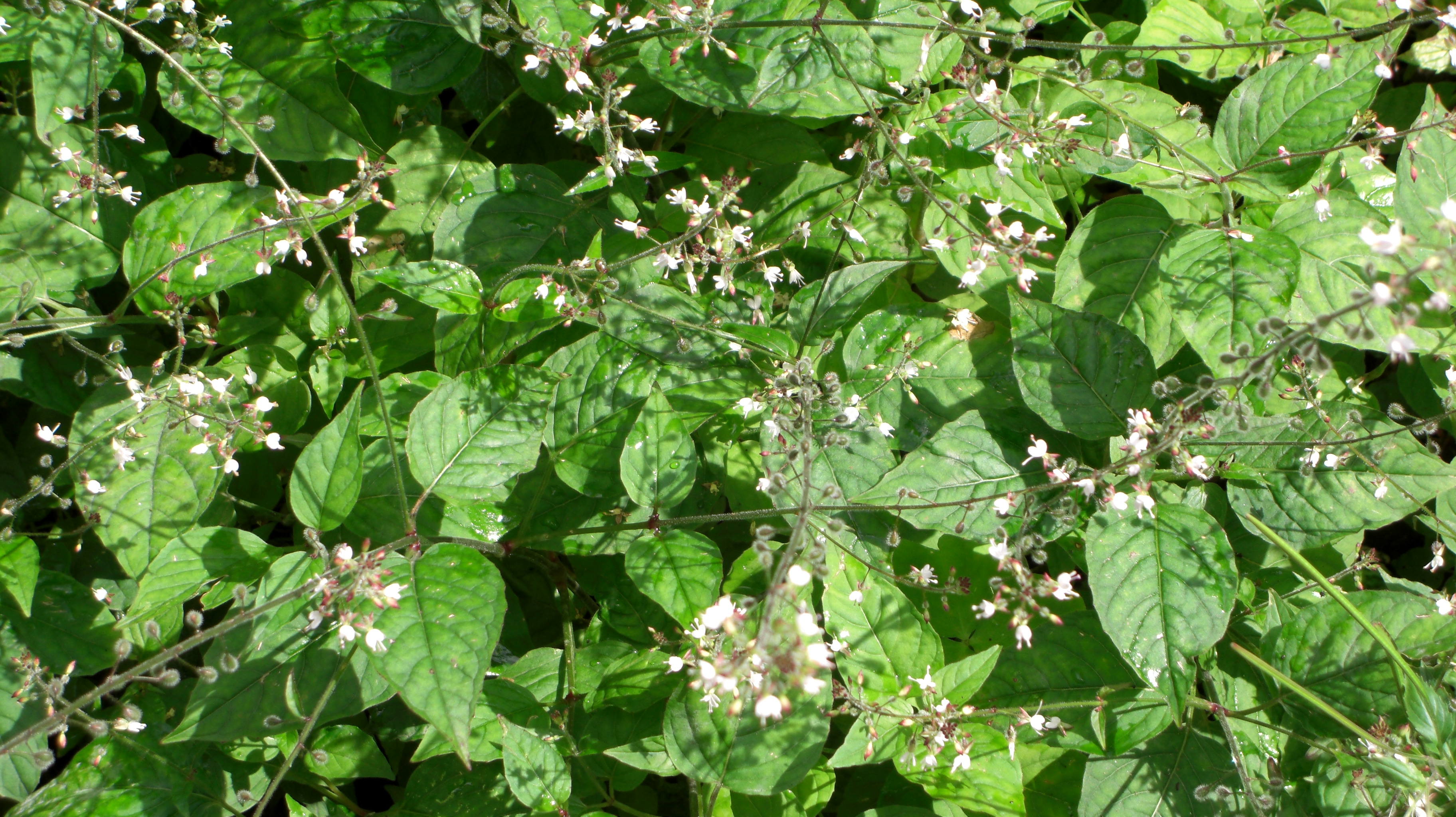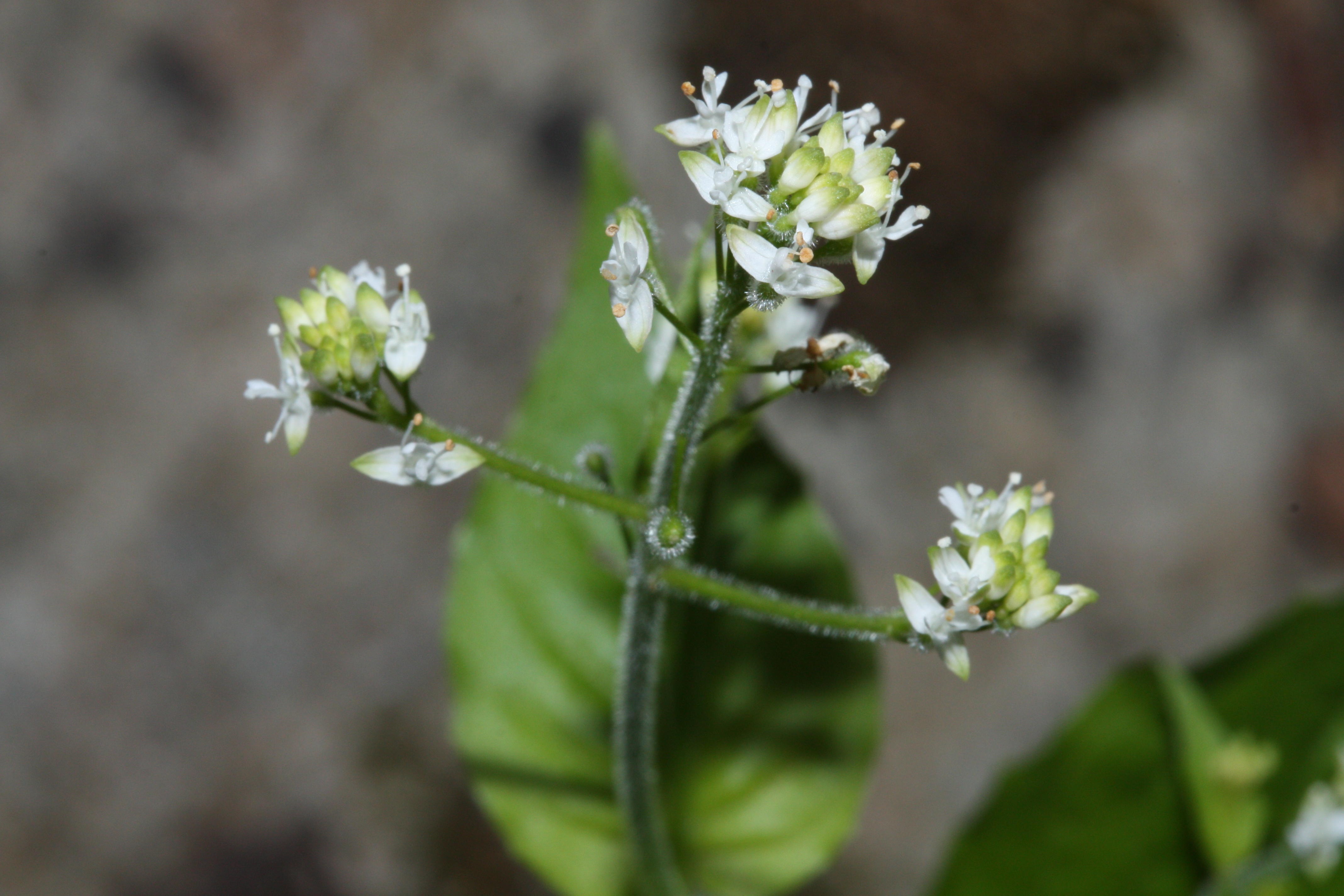Enchanter's-nightshade on:
[Wikipedia]
[Google]
[Amazon]
The ''Circaea'', or enchanter's nightshades, are a genus of flowering plants in the evening primrose family Onagraceae. About two dozen taxa have been described, including eight species. Plants of the genus occur throughout the temperate and boreal forests of the

 In 1753, Swedish botanist Carl Linnaeus established the genus ''Circaea'' by describing two species, ''Circaea lutetiana'' and ''Circaea alpina''. Linnaeus also described a variety of ''C. lutetiana'', which later became known as ''Circaea canadensis''.
The generic name ''Circaea'' refers to the enchantress Circe from Greek mythology. Botanists in the late 16th century believed Circe used the herb to charm Odysseus' companions, hence the common name enchanter's nightshade (not to be confused with the nightshade family of plants, which are unrelated). Molecular evidence indicates the closest relative to ''Circaea'' is the lineage that gave rise to the genus '' Fuchsia'', which diverged from it around 41 million years ago.
In 1753, Swedish botanist Carl Linnaeus established the genus ''Circaea'' by describing two species, ''Circaea lutetiana'' and ''Circaea alpina''. Linnaeus also described a variety of ''C. lutetiana'', which later became known as ''Circaea canadensis''.
The generic name ''Circaea'' refers to the enchantress Circe from Greek mythology. Botanists in the late 16th century believed Circe used the herb to charm Odysseus' companions, hence the common name enchanter's nightshade (not to be confused with the nightshade family of plants, which are unrelated). Molecular evidence indicates the closest relative to ''Circaea'' is the lineage that gave rise to the genus '' Fuchsia'', which diverged from it around 41 million years ago.
Natural England.
Accessed July 2011
Accessed July 2011
Accessed July 2011 * * {{Taxonbar, from=Q158100 Taxa named by Joseph Pitton de Tournefort Plants described in 1753 Taxa named by Carl Linnaeus Onagraceae genera
Northern Hemisphere
The Northern Hemisphere is the half of Earth that is north of the Equator. For other planets in the Solar System, north is defined as being in the same celestial hemisphere relative to the invariable plane of the solar system as Earth's Nort ...
. Three taxa occur in North America: ''Circaea alpina
''Circaea alpina'', commonly called alpine enchanter's nightshade or small enchanter's nightshade, is a 10–30 cm tall perennial herb found in cool forests of the Northern Hemisphere.
Description
The leaves are opposite, ovate, 2–6 ...
'', ''Circaea canadensis
''Circaea canadensis'', known as eastern enchanter's nightshade, Canada enchanter's nightshade, broad-leaved enchanter's nightshade, is a perennial herbaceous plant found in forests of eastern North America. It is very similar to its sister speci ...
'', and the hybrid ''Circaea'' × ''sterilis''. The generic name ''Circaea'' refers to the enchantress Circe from Greek mythology who is said to have used the herb as a charm.
Description
Members of genus ''Circaea'' are perennial, herbaceous plants with erect stems, which may or may not be branched. The stem leaves are opposite andpetiolate
Petiole may refer to:
*Petiole (botany), the stalk of a leaf, attaching the blade to the stem
*Petiole (insect anatomy)
In entomology, petiole is the technical term for the narrow waist of some hymenopteran insects, especially ants, bees, a ...
, with toothed edges (i.e., with dentate leaf margins). The inflorescence is a terminal, erect raceme
A raceme ( or ) or racemoid is an unbranched, indeterminate type of inflorescence bearing flowers having short floral stalks along the shoots that bear the flowers. The oldest flowers grow close to the base and new flowers are produced as the s ...
, with additional racemes at the apices of stem branches (if any). Flowers are dimerous Merosity (from the greek "méros," which means "having parts") refers to the number of component parts in a distinct whorl of a plant structure. The term is most commonly used in the context of a flower where it refers to the number of sepals in a w ...
with 2 sepals, 2 petal
Petals are modified Leaf, leaves that surround the reproductive parts of flowers. They are often advertising coloration, brightly colored or unusually shaped to attract pollinators. All of the petals of a flower are collectively known as the ''c ...
s, and 2 stamen
The stamen (plural ''stamina'' or ''stamens'') is the pollen-producing reproductive organ of a flower. Collectively the stamens form the androecium., p. 10
Morphology and terminology
A stamen typically consists of a stalk called the filame ...
s. The sepals, petals, and stamens alternate such that the stamens ultimately align with the sepals. The petals are white or pink in color. The fruit is a capsule with one or two seeds. Plants disperse their seeds by producing burr
Burr may refer to:
Places
* Burr (crater), on the Jovian moon Callisto
*Burr, Minnesota, an unincorporated community, United States
* Burr, Missouri, an unincorporated community, United States
*Burr, Nebraska, a village, United States
* Burr, Sa ...
s that adhere to clothing, fur, and feathers.
Taxonomy

Taxa
,Plants of the World Online
Plants of the World Online (POWO) is an online database published by the Royal Botanic Gardens, Kew. It was launched in March 2017 with the ultimate aim being "to enable users to access information on all the world's known seed-bearing plants by ...
(POWO) accepts eight species and eight subspecies
In biological classification, subspecies is a rank below species, used for populations that live in different areas and vary in size, shape, or other physical characteristics (morphology), but that can successfully interbreed. Not all species ...
:
* ''Circaea alpina
''Circaea alpina'', commonly called alpine enchanter's nightshade or small enchanter's nightshade, is a 10–30 cm tall perennial herb found in cool forests of the Northern Hemisphere.
Description
The leaves are opposite, ovate, 2–6 ...
''
** ''Circaea alpina'' subsp. ''alpina''
** ''Circaea alpina'' subsp. ''angustifolia''
** ''Circaea alpina'' subsp. ''caulescens''
** ''Circaea alpina'' subsp. ''imaicola''
** ''Circaea alpina'' subsp. ''micrantha''
** ''Circaea alpina'' subsp. ''pacifica''
* ''Circaea canadensis
''Circaea canadensis'', known as eastern enchanter's nightshade, Canada enchanter's nightshade, broad-leaved enchanter's nightshade, is a perennial herbaceous plant found in forests of eastern North America. It is very similar to its sister speci ...
''
** ''Circaea canadensis'' subsp. ''canadensis''
** ''Circaea canadensis'' subsp. ''quadrisulcata''
* ''Circaea cordata
''Circaea cordata'' is a species of flowering plant in the family Onagraceae
The Onagraceae are a family of flowering plants known as the willowherb family or evening primrose family. They include about 650 species of herbs, shrubs, and tree ...
''
* ''Circaea erubescens
''Circaea erubescens'' is a species of flowering plant in the evening primrose family Onagraceae
The Onagraceae are a family of flowering plants known as the willowherb family or evening primrose family. They include about 650 species of herb ...
''
* ''Circaea glabrescens
''Circaea glabrescens'' is a species of flowering plant in the evening primrose family Onagraceae.
References
{{Taxonbar, from=Q15236147
glabrescens ...
''
* ''Circaea lutetiana
''Circaea lutetiana'', known as broad-leaved enchanter's nightshade, is a plant in the evening primrose family, Onagraceae.
The genus name comes from the enchantress Circe of Greek mythology and the specific designation is derived from Lutetia, ...
''
* ''Circaea mollis
''Circaea mollis'' is a species of flowering plant in the evening primrose family Onagraceae.
References
{{Taxonbar, from=Q10908037
mollis
Mollis is a former municipality in the canton of Glarus in Switzerland. Effective from 1 January ...
''
* ''Circaea repens
''Circaea repens'' is a species of flowering plant in the evening primrose family Onagraceae
The Onagraceae are a family of flowering plants known as the willowherb family or evening primrose family. They include about 650 species of herbs, ...
''
POWO also recognizes eight named hybrids:
* ''Circaea'' × ''decipiens''
* ''Circaea'' × ''dubia''
* ''Circaea'' × ''intermedia''
* ''Circaea'' × ''mentiens''
* ''Circaea'' × ''ovata''
* ''Circaea'' × ''skvortsovii''
* ''Circaea'' × ''sterilis''
* ''Circaea'' × ''taronensis''
For example, the parents of ''Circaea'' × ''sterilis'' are ''C. alpina'' and ''C. canadensis''. The hybrid is sterile but spreads vigorously by vegetative means.
Distribution
Members of genus ''Circaea'' occur throughout the temperate and boreal forests of theNorthern Hemisphere
The Northern Hemisphere is the half of Earth that is north of the Equator. For other planets in the Solar System, north is defined as being in the same celestial hemisphere relative to the invariable plane of the solar system as Earth's Nort ...
, from near sea level to altitude, and from 10°–70° N latitude. ''Circaea alpina'' is the most widespread species, ranging across North America, Europe, and Asia. Likewise ''Circaea canadensis'' ranges across continents, in North America, European Russia, and Asia. ''Circaea lutetiana'' occurs throughout Europe, ranging eastward to Iran.
Three taxa are known to occur in North America: ''Circaea alpina'', ''Circaea canadensis'', and the hybrid ''Circaea'' × ''sterilis''. ''C. alpina'' is wide ranging across the continent, from California to Alaska in the west, and from Newfoundland to North Carolina in the east, while ''C. canadensis'' is confined to the eastern half of North America. The hybrid, ''C.'' × ''sterilis'', is found wherever the ranges of its parent species overlap.
References
External links
Natural England.
Accessed July 2011
Accessed July 2011
Accessed July 2011 * * {{Taxonbar, from=Q158100 Taxa named by Joseph Pitton de Tournefort Plants described in 1753 Taxa named by Carl Linnaeus Onagraceae genera